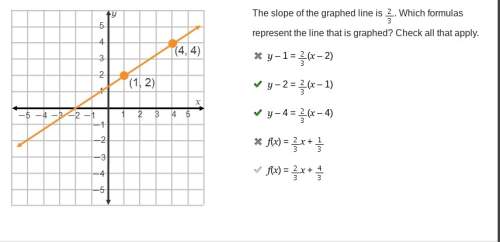
Mathematics, 23.07.2021 03:30 KelseyCope1184
Consider a manufacturer's claim that bricks produced by a new and more efficient process have a mean compressive strength greater than 50.0 (measured in units of 100 pounds per square inch) Bricks that do not meet this standard are considered nonconforming and will not be used by the customer. From past experience, it is known that the mean compressive strength of bricks is normally distributed with a standard deviation of 6. The bricks will not be accepted unless we can be reasonably sure that the mean is greater than 50.0. A random sample of nine bricks is taken.
(a) State the appropriate null and alternative hypotheses
(b) Suppose we use the rejection region>53) to test the null hypothesis. Compute the Type I
(c) Compute the Type II error probability at the alternative u-55. Depict the Type I error from part
(d) Compute the Type II error probability at the alternative u 52. Depict the Type I error from part
(e) Find the new critical value (in terms of x) such that the corresponding test has significance level error probability for the test. Depict the Type I error graphically (b) and the Type II error graphically (b) and the Type II error graphically of 0.05. Depict this new significance level and the new critical value graphically

Answers: 1


Another question on Mathematics

Mathematics, 21.06.2019 21:30
In a test for esp (extrasensory perception), the experimenter looks at cards that are hidden from the subject. each card contains either a star, a circle, a wave, a cross or a square.(five shapes) as the experimenter looks at each of 20 cards in turn, the subject names the shape on the card. when the esp study described above discovers a subject whose performance appears to be better than guessing, the study continues at greater length. the experimenter looks at many cards bearing one of five shapes (star, square, circle, wave, and cross) in an order determined by random numbers. the subject cannot see the experimenter as he looks at each card in turn, in order to avoid any possible nonverbal clues. the answers of a subject who does not have esp should be independent observations, each with probability 1/5 of success. we record 1000 attempts. which of the following assumptions must be met in order to solve this problem? it's reasonable to assume normality 0.8(1000), 0.2(1000)%30 approximately normal 0.8(1000), 0.2(1000)% 10 approximately normal srs it is reasonable to assume the total number of cards is over 10,000 it is reasonable to assume the total number of cards is over 1000
Answers: 1

Mathematics, 21.06.2019 22:10
Which equation is y = -6x2 + 3x + 2 rewritten in vertex form?
Answers: 1

Mathematics, 22.06.2019 00:50
E. which of the following is not a possible probability? a. 25/100 b. 1.25 c. 1 d. 0
Answers: 1

Mathematics, 22.06.2019 04:30
Arectangular garden measures 5m by 7m. both dimensions are to be extended by the same amount so that the area of the garden is doubled. by how much should the dimensions increase, to the nearest tenth of a metre?
Answers: 2
You know the right answer?
Consider a manufacturer's claim that bricks produced by a new and more efficient process have a mean...
Questions




Computers and Technology, 15.11.2019 18:31




Computers and Technology, 15.11.2019 18:31


Computers and Technology, 15.11.2019 18:31

World Languages, 15.11.2019 18:31












